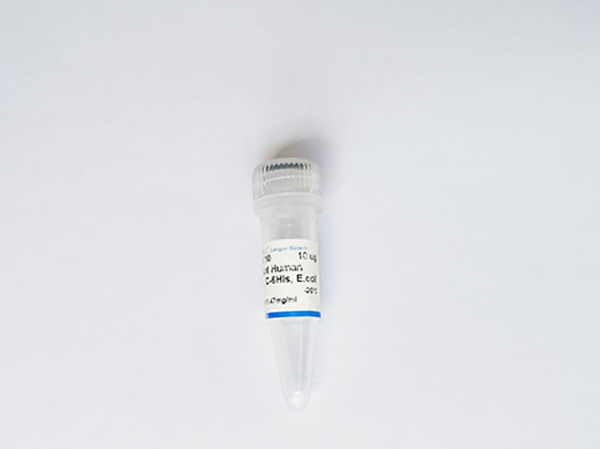概述
Recombinant Human Fibroblast Growth Factor 10 is produced by our E.coli expression system and the target gene encoding Gln38-Ser208 is expressed.
使用说明
This material is offered by Sangon Biotech for research, laboratory or further evaluation purposes. NOT FOR HUMAN USE.
技术规格
| Tag | None |
| 种属 | Human |
| 表达系统 | E.coli |
| Accession# | O15520 |
| Source | E.coli |
| Formulation_Description | Lyophilized from a 0.2 μm filtered solution of 20mM Tris, 200mM NaCl, pH 8.0. |
| Storage | Lyophilized protein should be stored at < -20°C, though stable at room temperature for 3 weeks.Reconstituted protein solution can be stored at 4-7°C for 2-7 days.Aliquots of reconstituted samples are stable at < -20°C for 3 months. |
| Reconstitution | Dissolve the lyophilized protein in distilled water. |
| Purity | Greater than 95% as determined by reducing SDS-PAGE. |
| Endotoxin | Less than 0.1 ng/μg (1 EU/μg) as determined by LAL test. |
| Background | Fibroblast growth factor 10 (FGF-10, KGF-2), is a member of the fibroblast growth factor (FGF) family that includes FGF-3, -7, and -22. KGF-2 is secreted by mesenchymal cells and associates with extracellular FGF-BP. It preferentially binds and activates epithelial cell FGFR2 and interacts more weakly with FGFR1. It plays an important role in the regulation of embryonic development, cell proliferation and cell differentiation. It exhibits mitogenic activity for keratinizing epidermal cells, but essentially no activity for fibroblasts, which is similar to the biological activity of FGF7. FGF10 is required for normal branching morphogenesis. Defects in FGF10 are the cause of autosomal dominant aplasia of lacrimal and salivary glands (ALSG). ALSG has variable expressivity, and affected individuals may have aplasia or hypoplasia of the lacrimal, parotid, submandibular and sublingual glands and absence of the lacrimal puncta. The disorder is characterized by irritable eyes, recurrent eye infections, epiphora (constant tearing) and xerostomia (dryness of the mouth), which increases the risk of dental erosion, dental caries, periodontal disease and oral infections. |











 党沛
党沛 





